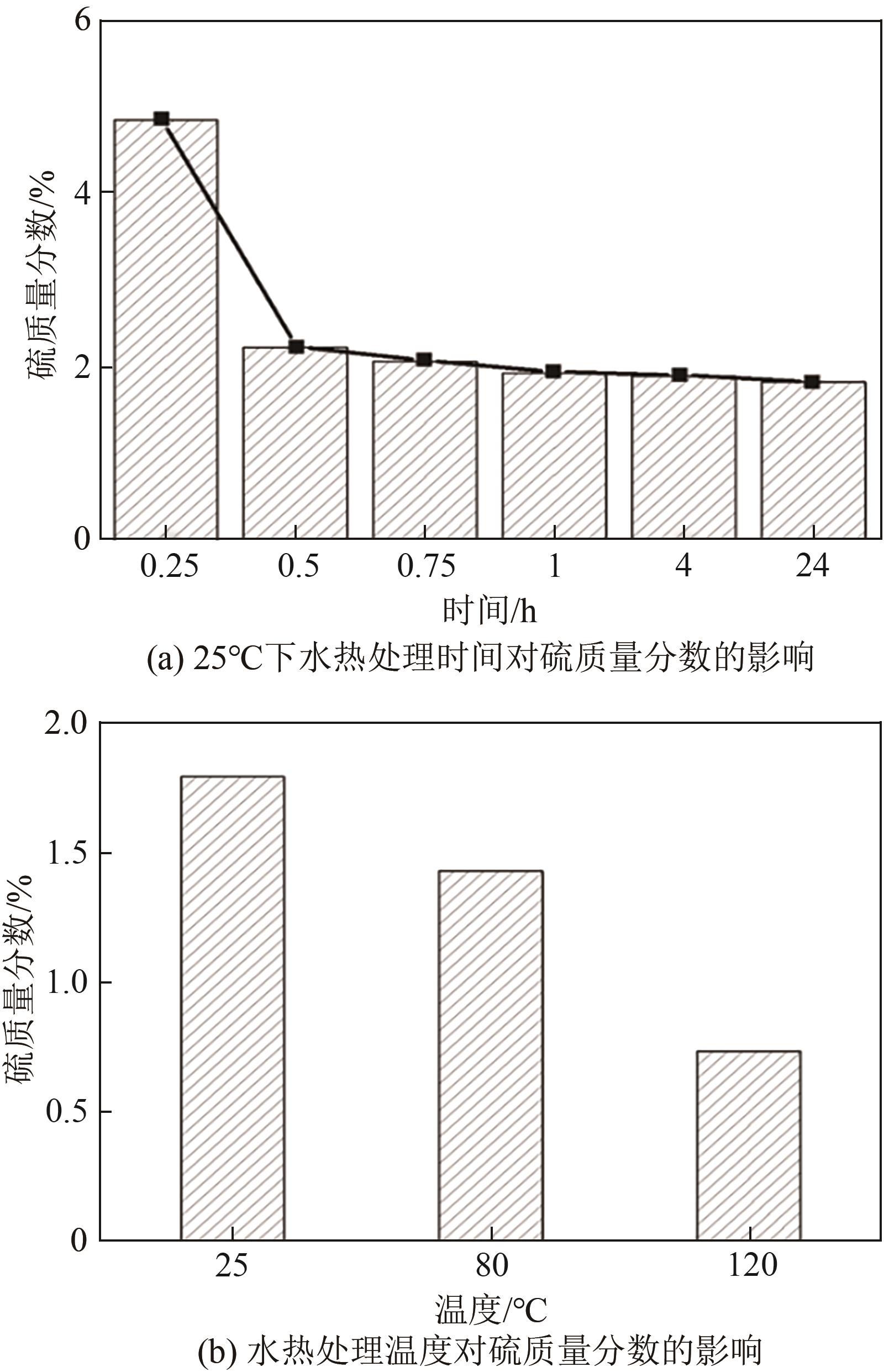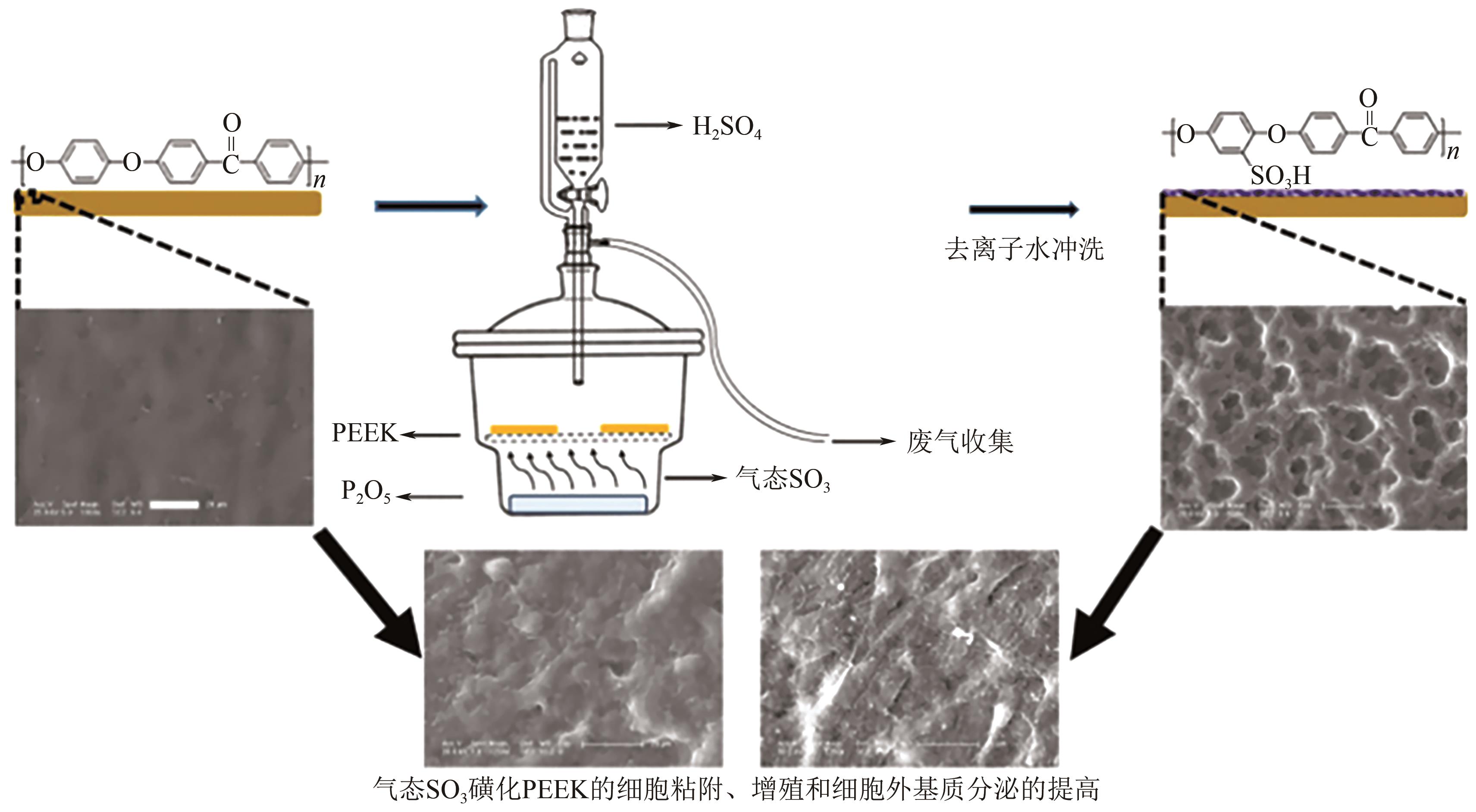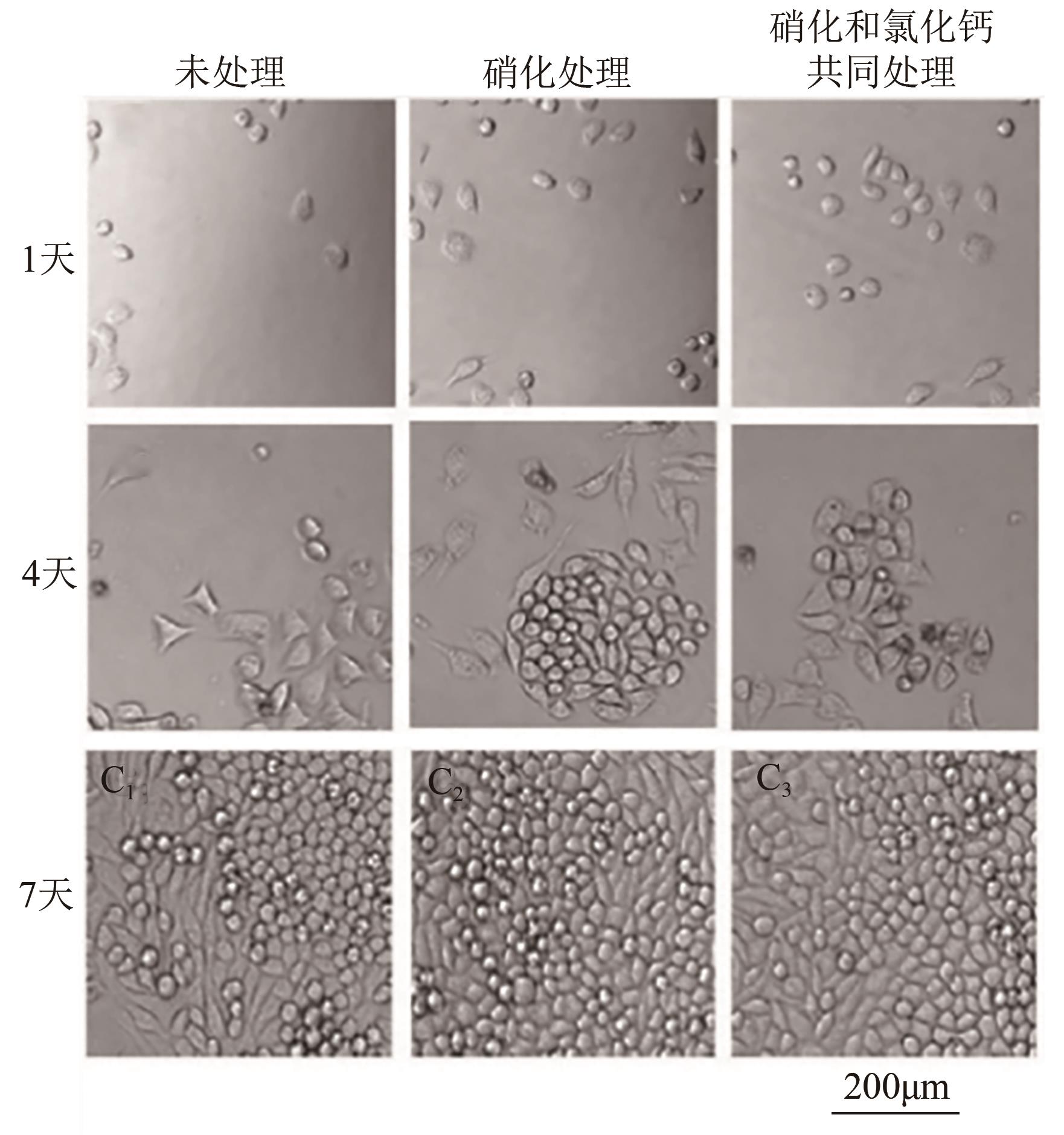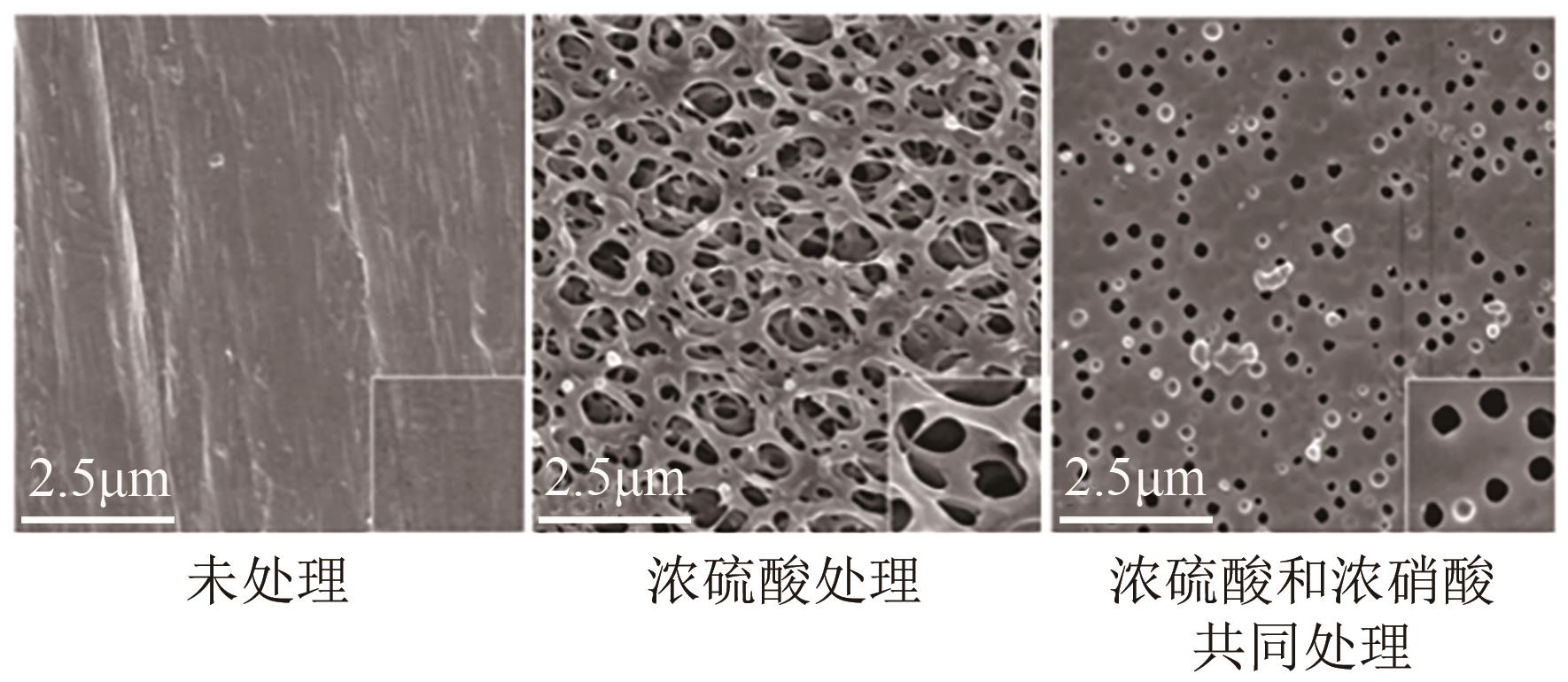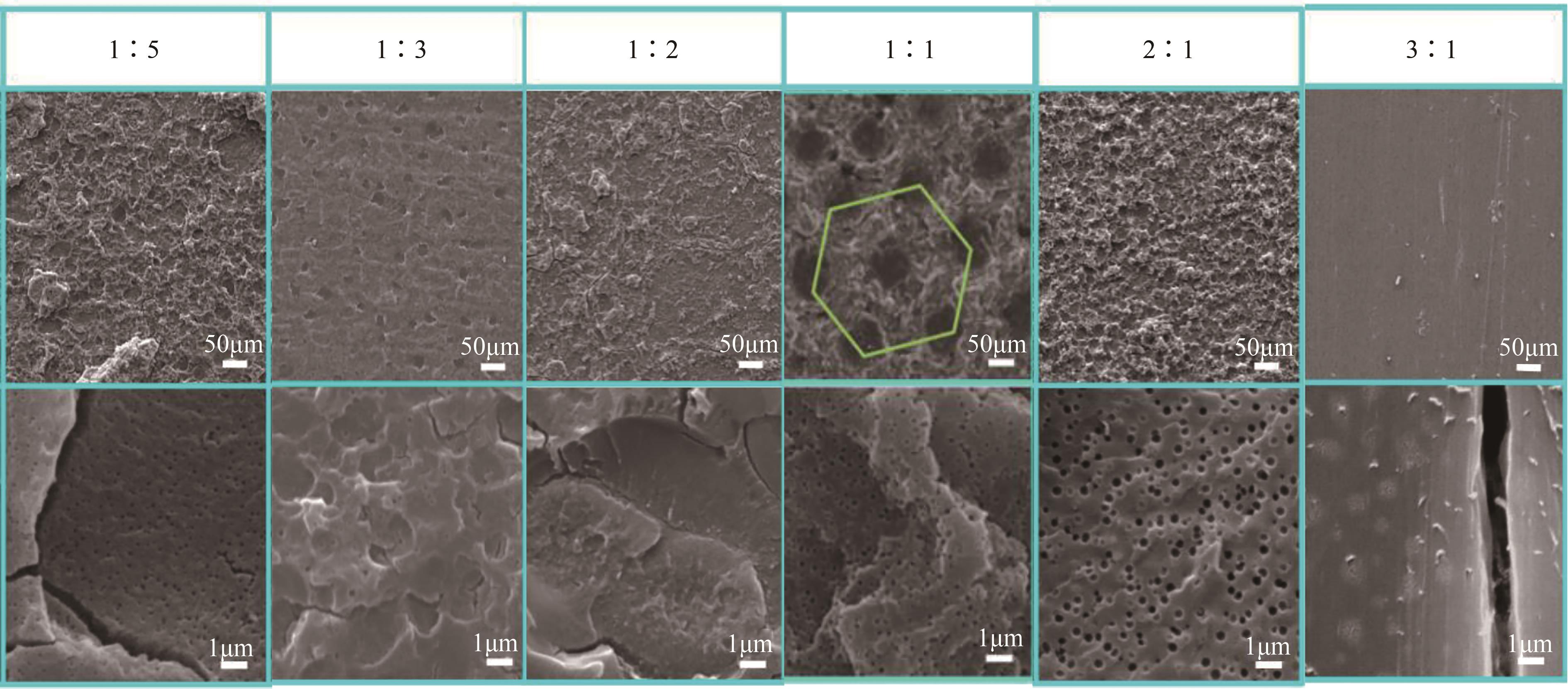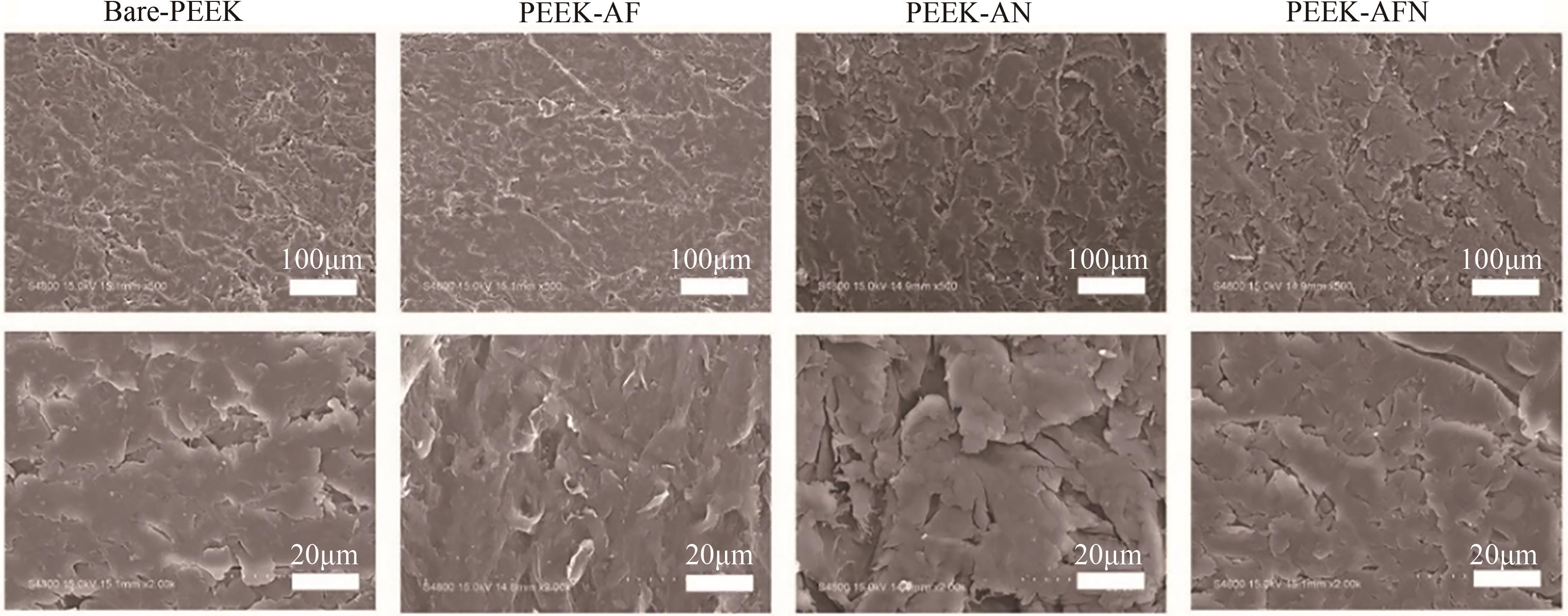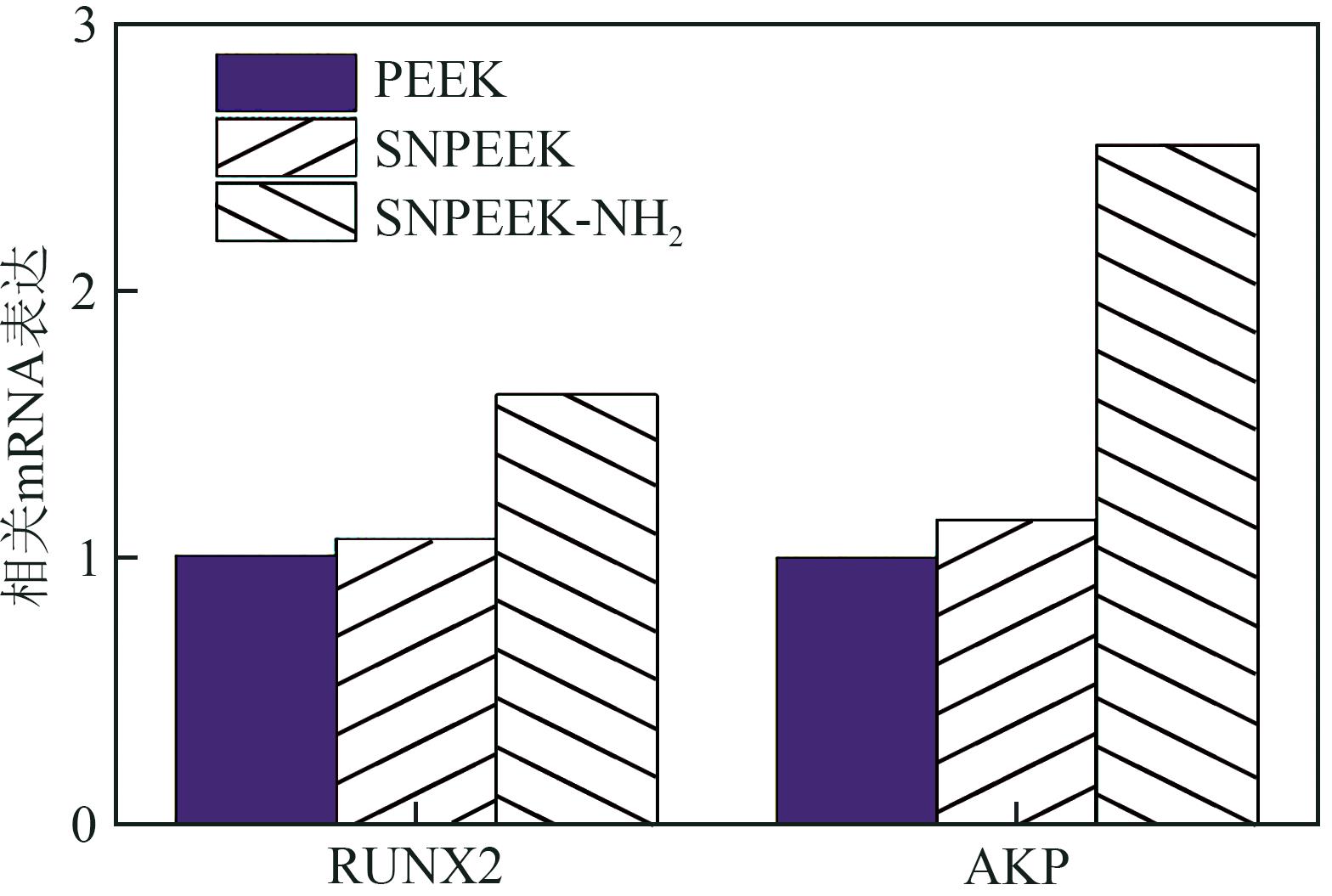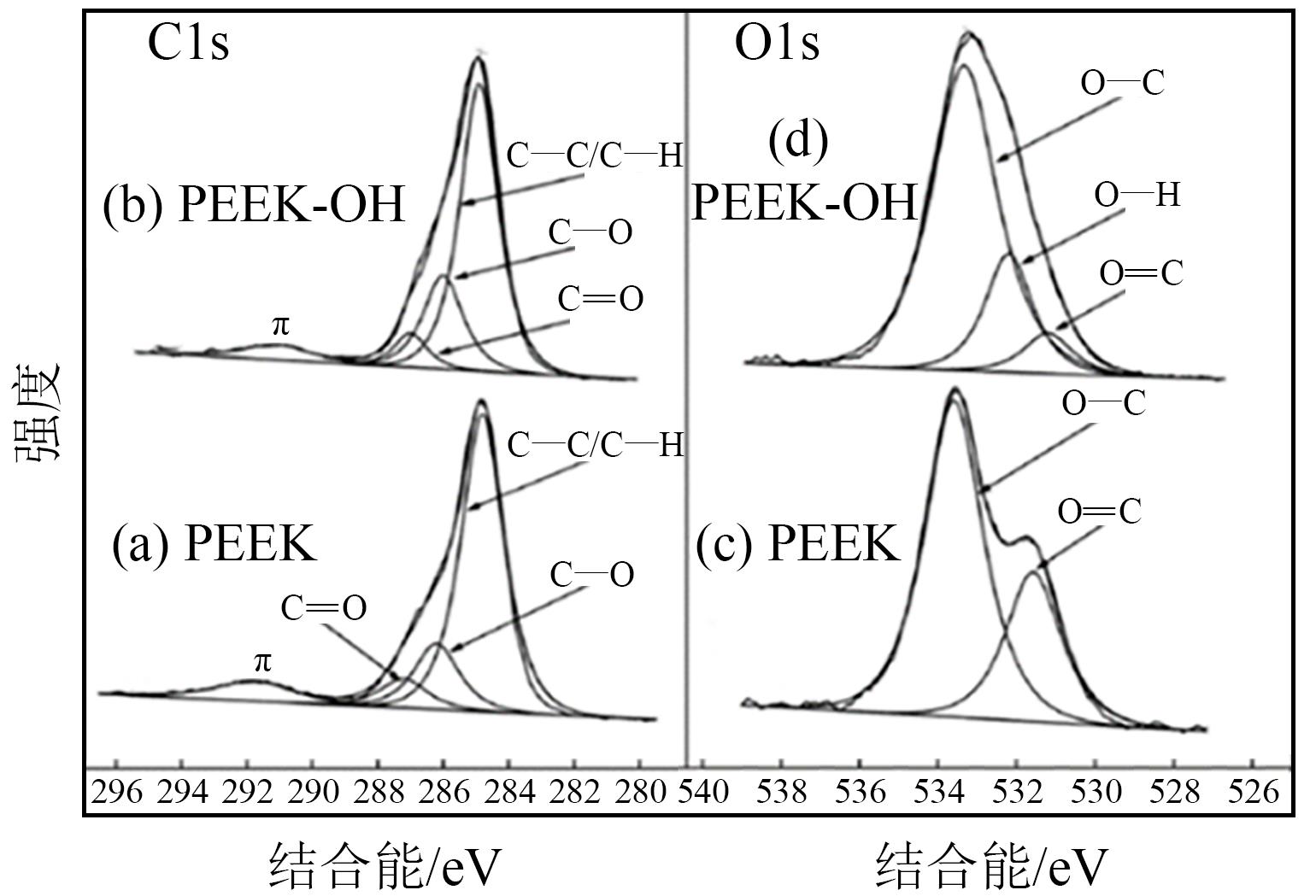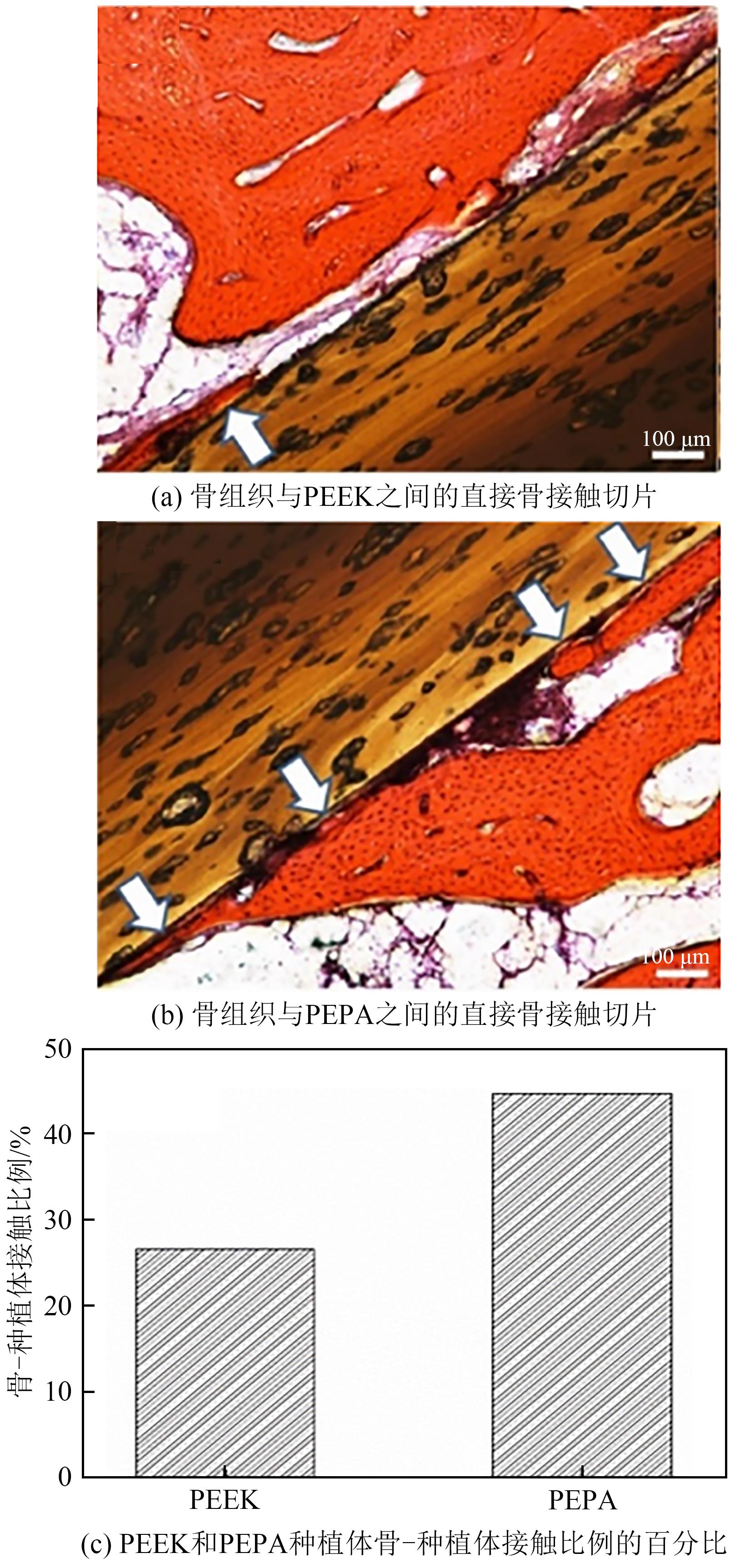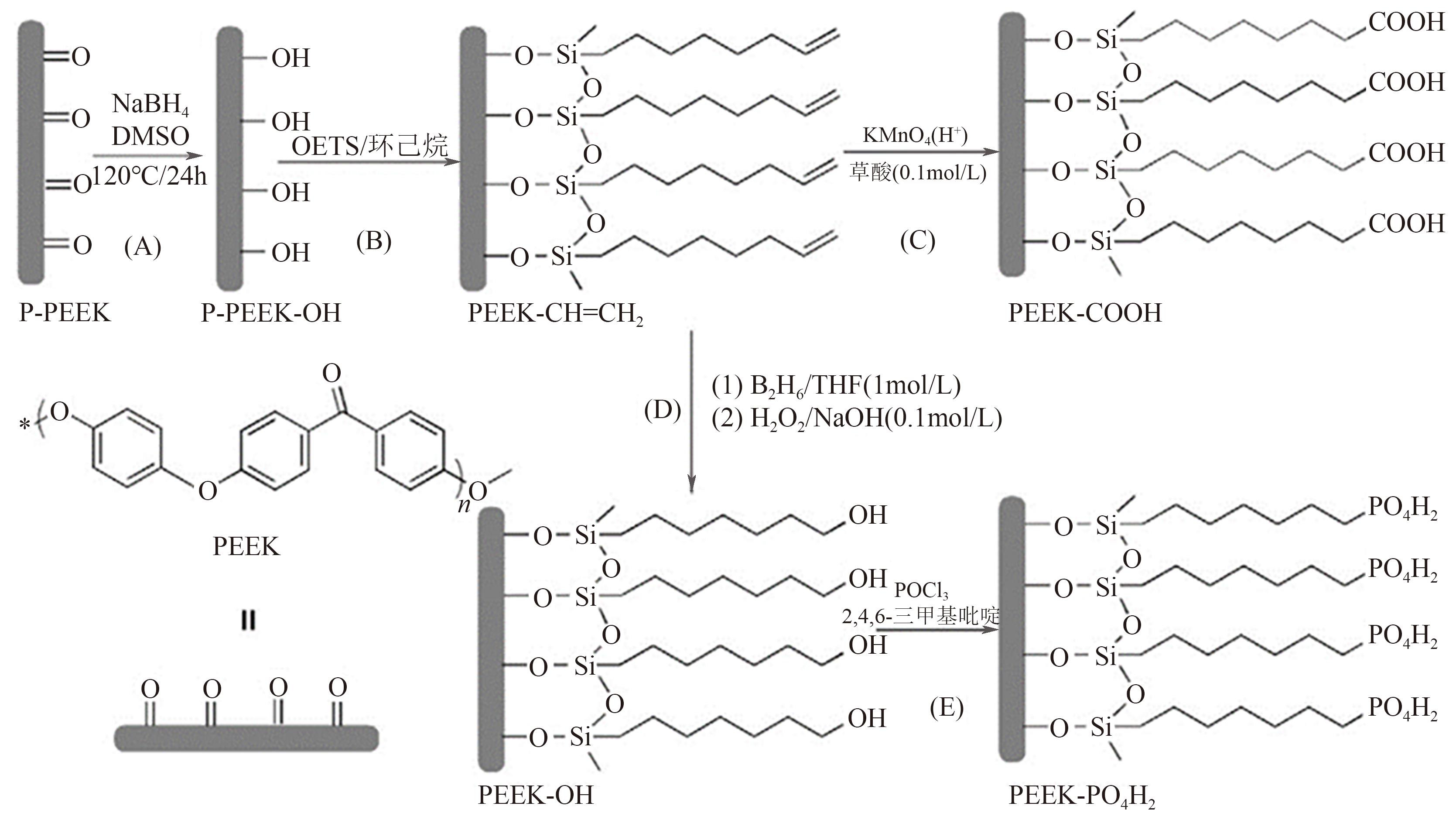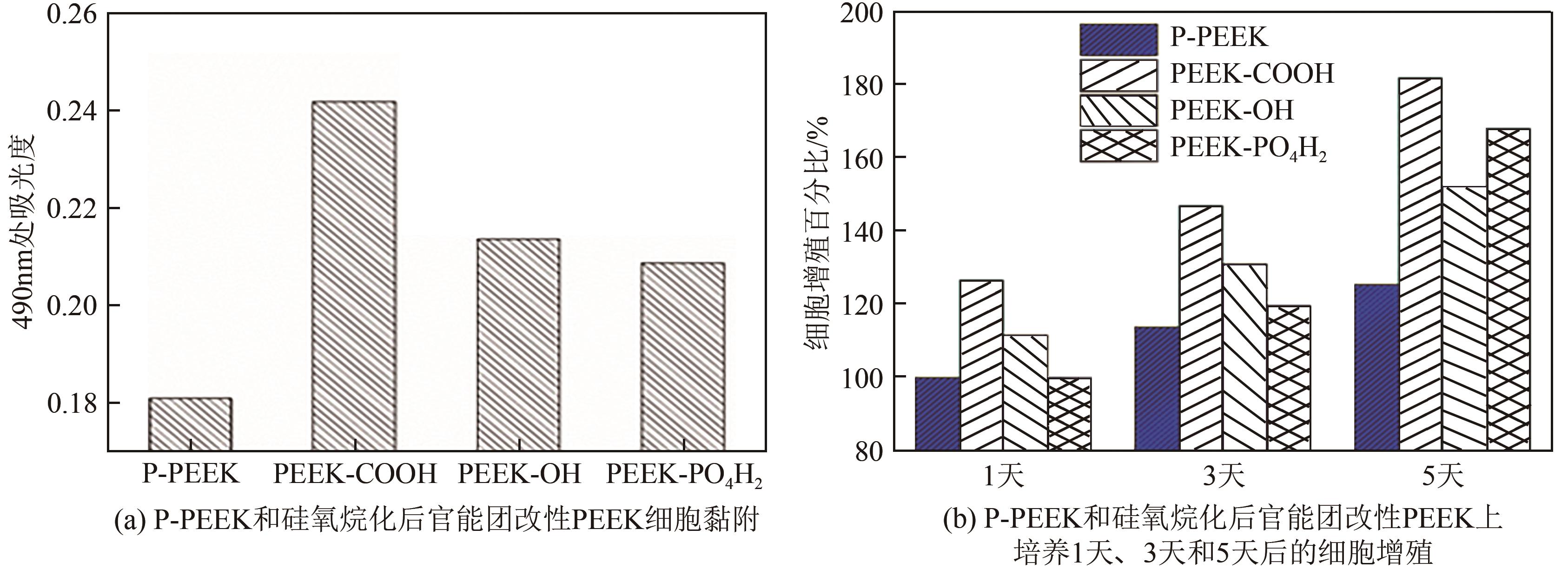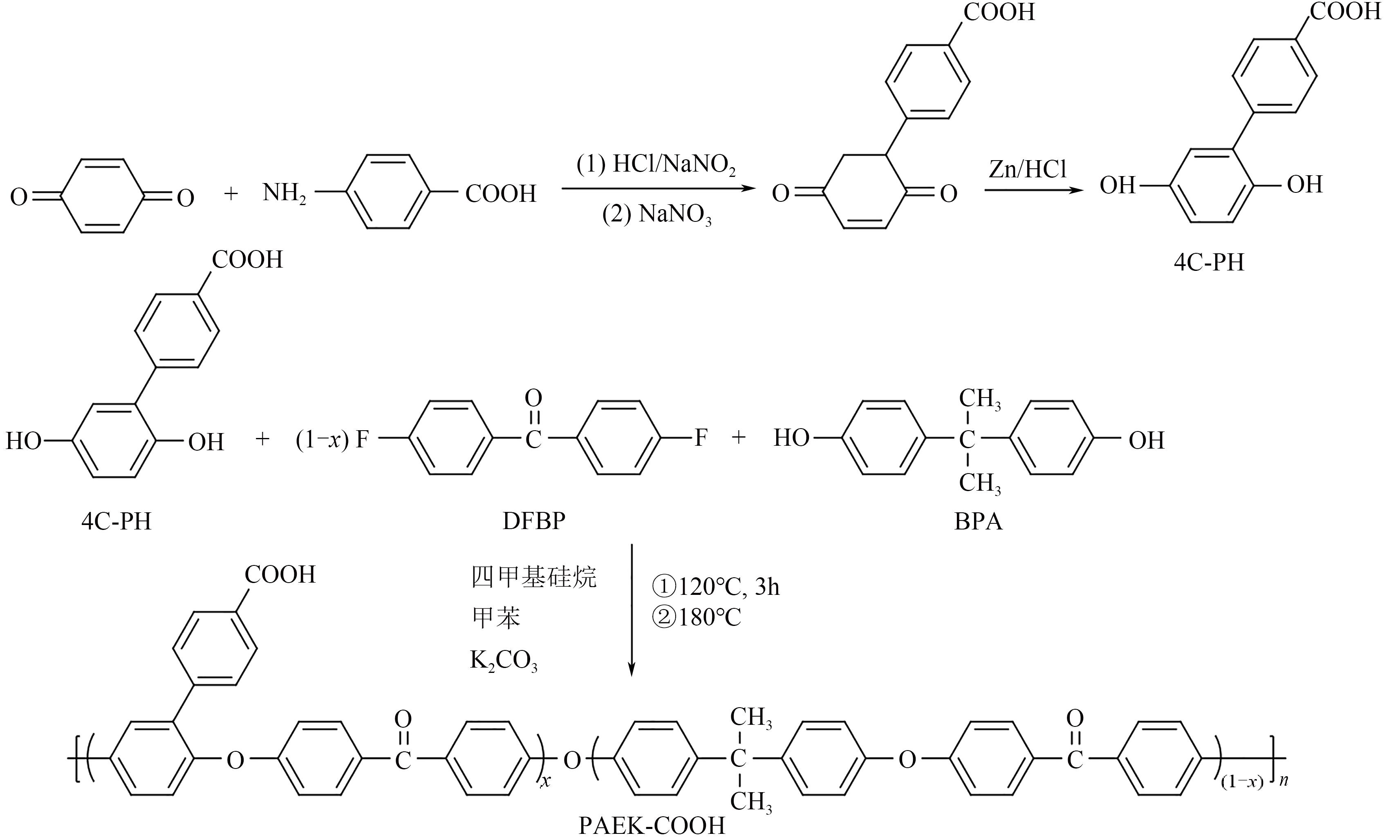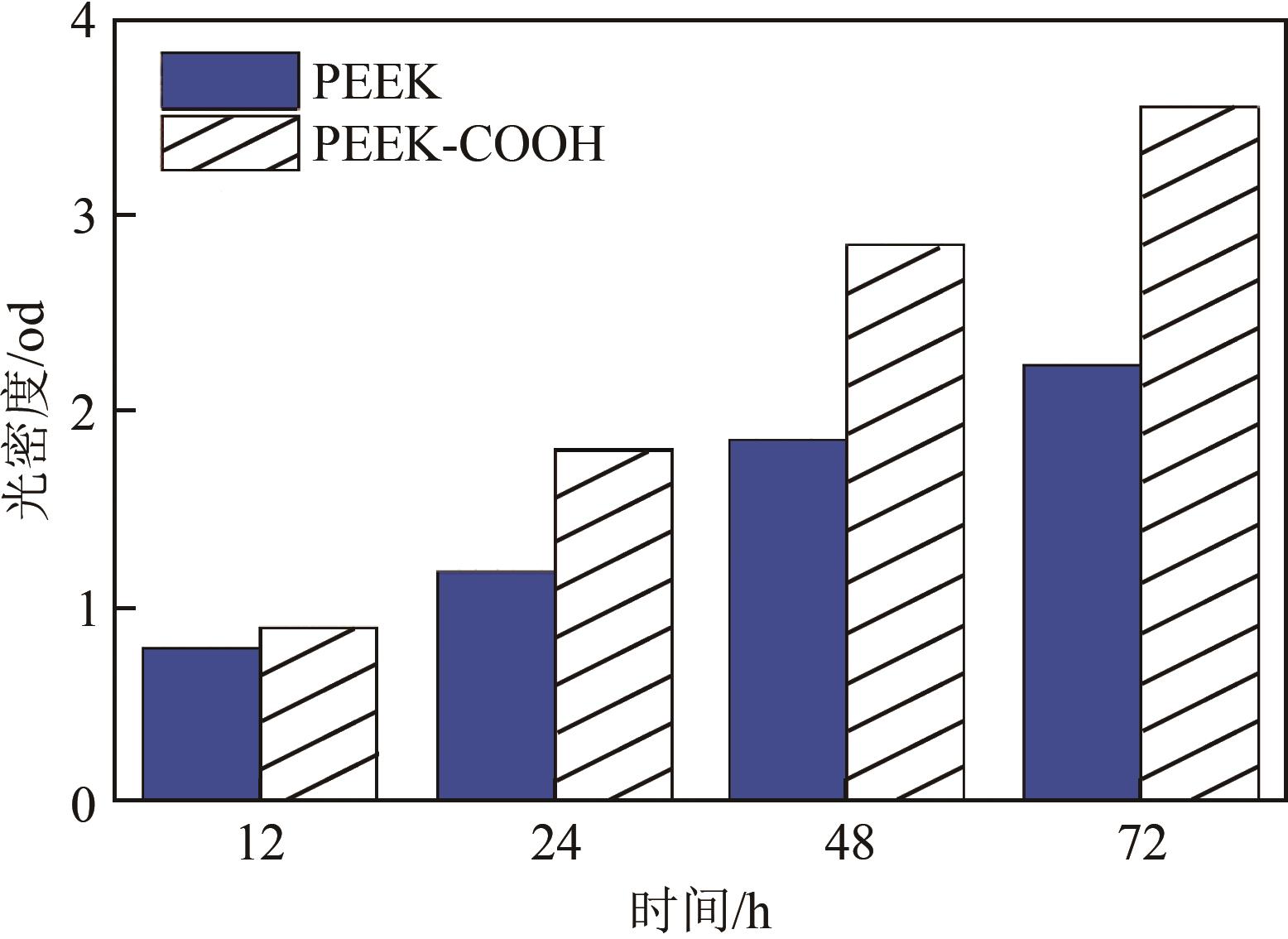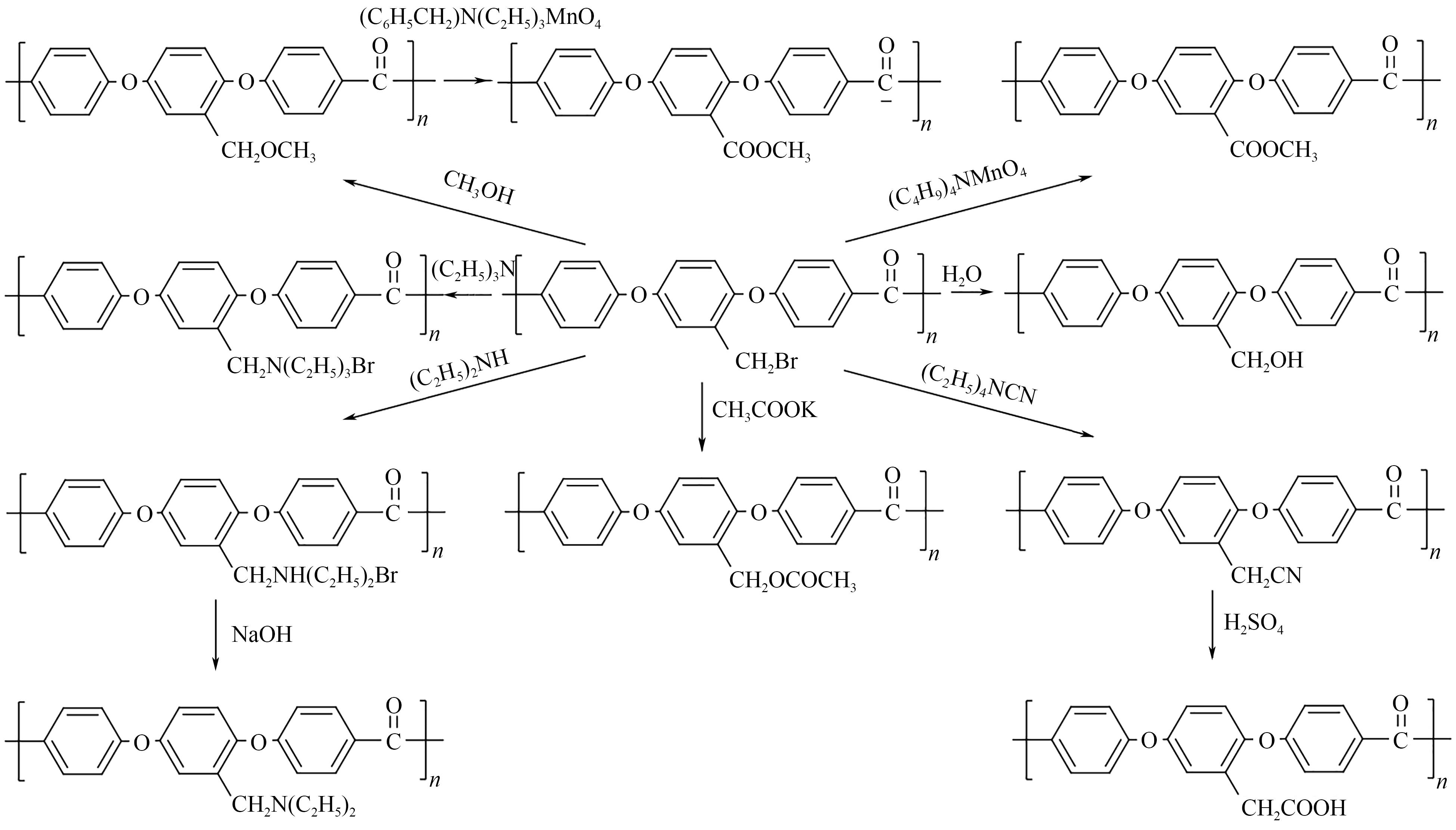Chemical Industry and Engineering Progress ›› 2023, Vol. 42 ›› Issue (8): 4015-4028.DOI: 10.16085/j.issn.1000-6613.2023-0500
Previous Articles Next Articles
Research progress on chemical modification of polyether ether ketone for the high bioactivity
CHEN Junjun1,2( ), FEI Chang’en1, DUAN Jintang1,2, GU Xueping1,2, FENG Lianfang1,2, ZHANG Cailiang1,2(
), FEI Chang’en1, DUAN Jintang1,2, GU Xueping1,2, FENG Lianfang1,2, ZHANG Cailiang1,2( )
)
- 1.State Key Laboratory of Chemical Engineering, College of Chemical and Biological Engineering, Zhejiang University, Hangzhou 310027, Zhejiang, China
2.Institute of Zhejiang University-Quzhou, Quzhou 324000, Zhejiang, China
-
Received:2023-03-31Revised:2023-05-27Online:2023-09-19Published:2023-08-15 -
Contact:ZHANG Cailiang
高生物活性聚醚醚酮化学改性研究进展
陈俊俊1,2( ), 费昌恩1, 段金汤1,2, 顾雪萍1,2, 冯连芳1,2, 张才亮1,2(
), 费昌恩1, 段金汤1,2, 顾雪萍1,2, 冯连芳1,2, 张才亮1,2( )
)
- 1.化学工程联合国家重点实验室,浙江大学化学工程与生物工程学院,浙江 杭州 310027
2.浙江大学衢州研究院,浙江 衢州 324000
-
通讯作者:张才亮 -
作者简介:陈俊俊(1997—),男,硕士研究生,研究方向为聚合物反应工程。E-mail:junjunchen@zju.edu.cn。 -
基金资助:国家重点研发计划(2020YFC1107100);浙江大学衢州研究院科技计划(IZQ2020KJ2005)
CLC Number:
Cite this article
CHEN Junjun, FEI Chang’en, DUAN Jintang, GU Xueping, FENG Lianfang, ZHANG Cailiang. Research progress on chemical modification of polyether ether ketone for the high bioactivity[J]. Chemical Industry and Engineering Progress, 2023, 42(8): 4015-4028.
陈俊俊, 费昌恩, 段金汤, 顾雪萍, 冯连芳, 张才亮. 高生物活性聚醚醚酮化学改性研究进展[J]. 化工进展, 2023, 42(8): 4015-4028.
share this article
Add to citation manager EndNote|Ris|BibTeX
URL: https://hgjz.cip.com.cn/EN/10.16085/j.issn.1000-6613.2023-0500
| 聚合物 | 初始干重/g | 湿重/g | 湿重变化质量分数/% | 干重/g | 干重变化质量分数/% | 天数 |
|---|---|---|---|---|---|---|
| PEEK | 0.132 | 0.142 | +7.6 | 0.136 | +3.0 | 7 |
| 0.151 | +14.4 | 0.139 | +5.3 | 15 | ||
| 0.192 | +45.5 | 0.147 | +11.4 | 30 | ||
| PEEK-COOH | 0.114 | 0.123 | +7.9 | 0.118 | +3.5 | 7 |
| 0.132 | +15.8 | 0.121 | +6.1 | 15 | ||
| 0.167 | +46.5 | 0.129 | +13.2 | 30 | ||
| HOOC-PEEK-NH2 | 0.086 | 0.093 | +8.2 | 0.089 | +3.5 | 7 |
| 0.100 | +16.3 | 0.092 | +7.0 | 15 | ||
| 0.126 | +46.5 | 0.098 | +14.0 | 30 |
| 聚合物 | 初始干重/g | 湿重/g | 湿重变化质量分数/% | 干重/g | 干重变化质量分数/% | 天数 |
|---|---|---|---|---|---|---|
| PEEK | 0.132 | 0.142 | +7.6 | 0.136 | +3.0 | 7 |
| 0.151 | +14.4 | 0.139 | +5.3 | 15 | ||
| 0.192 | +45.5 | 0.147 | +11.4 | 30 | ||
| PEEK-COOH | 0.114 | 0.123 | +7.9 | 0.118 | +3.5 | 7 |
| 0.132 | +15.8 | 0.121 | +6.1 | 15 | ||
| 0.167 | +46.5 | 0.129 | +13.2 | 30 | ||
| HOOC-PEEK-NH2 | 0.086 | 0.093 | +8.2 | 0.089 | +3.5 | 7 |
| 0.100 | +16.3 | 0.092 | +7.0 | 15 | ||
| 0.126 | +46.5 | 0.098 | +14.0 | 30 |
| 1 | IVAN Vladislavov Panayotov, Orti VALÉRIE, Cuisinier FRÉDÉRIC, et al. Polyetheretherketone (PEEK) for medical applications[J]. Journal of Materials Science: Materials in Medicine, 2016, 27(7): 118. |
| 2 | JONES D P, LEACH D C, MOORE D R. Mechanical properties of poly(ether-ether-ketone) for engineering applications[J]. Polymer, 1985, 26(9): 1385-1393. |
| 3 | 田爱国, 郭强. 聚醚醚酮及其复合材料的特性与应用研究进展[J]. 工程塑料应用, 2002, 30(2): 47-49. |
| TIAN Aiguo, GUO Qiang. Progress in the characteristics and application research of polyetheretherketone and its composites[J]. Engineering Plastics Application, 2002, 30(2): 47-49. | |
| 4 | MA Tongtong, ZHANG Jiajia, SUN Shuoyao, et al. Current treatment methods to improve the bioactivity and bonding strength of PEEK for dental application: A systematic review[J]. European Polymer Journal, 2023, 183: 111757. |
| 5 | HE Miaomiao, HUANG Yong, XU Huan, et al. Modification of polyetheretherketone implants: From enhancing bone integration to enabling multi-modal therapeutics[J]. Acta Biomaterialia, 2021, 129: 18-32. |
| 6 | LEE Woo-Taek, KOAK Jai-Young, Young-Jun LIM, et al. Stress shielding and fatigue limits of poly-ether-ether-ketone dental implants[J]. Journal of Biomedical Materials Research. Part B, Applied Biomaterials, 2012, 100(4): 1044-1052. |
| 7 | DAVOOD Almasi, NIDA Iqbal, MALIHEH Sadeghi, et al. Preparation methods for improving PEEK’s bioactivity for orthopedic and dental application: A review[J]. International Journal of Biomaterials, 2016, 2016: 8202653. |
| 8 | DONDANI Jay R, JANAKI Iyer, TRAN Simon D. Surface treatments of PEEK for osseointegration to bone[J]. Biomolecules, 2023, 13(3): 464. |
| 9 | 张少甫, 胡凡琦, 杨晓清, 等. PEEK融合器在强直性脊柱炎胸腰段后凸畸形合并Andersson骨折手术中的应用[J]. 解放军医学院学报, 2018, 39(5): 400-404. |
| ZHANG Shaofu, HU Fanqi, YANG Xiaoqing, et al. PEEK cage for treatment of thoracolumbar kyphosis deformity in ankylosing spondylitis patients with andersson fracture[J]. Academic Journal of Chinese PLA Medical School, 2018, 39(5): 400-404. | |
| 10 | GAO Chengzhe, WANG Zongliang, JIAO Zixue, et al. Enhancing antibacterial capability and osseointegration of polyetheretherketone (PEEK) implants by dual-functional surface modification[J]. Materials & Design, 2021, 205: 109733. |
| 11 | 刘湲秋, 汪清漩, 陆懿琳, 等. 聚醚醚酮涂层制备、改性及应用的研究综述[J]. 塑料工业, 2020, 48(10): 1-7. |
| LIU Yuanqiu, WANG Qingxuan, LU Yilin, et al. A review of the preparation, modification and application of PEEK coating[J]. China Plastics Industry, 2020, 48(10): 1-7. | |
| 12 | RIVEIRO A, SOTO R, COMESAÑA R, et al. Laser surface modification of PEEK[J]. Applied Surface Science, 2012, 258(23): 9437-9442. |
| 13 | KAWANO Tessei, WANG Meng-Jiy, ANDOU Yoshito. Surface modification of a regenerated cellulose film using low-pressure plasma treatment with various reactive gases[J]. ACS Omega, 2022, 7(48): 44085-44092. |
| 14 | 肖天华, 刘荣涛, 庞贻宇, 等. 骨植入聚醚醚酮材料表面改性的研究进展[J]. 广东工业大学学报, 2021, 38(2): 73-82. |
| XIAO Tianhua, LIU Rongtao, PANG Yiyu, et al. Progress on bone graft PEEK about surface modification[J]. Journal of Guangdong University of Technology, 2021, 38(2): 73-82. | |
| 15 | SUGANO Kiriko, KOMADA Wataru, OKADA Daizo, et al. Evaluation of composite resin core with prefabricated polyetheretherketone post on fracture resistance in the case of flared root canals[J]. Dental Materials Journal, 2020, 39(6): 924-932. |
| 16 | 刘吕花, 张伟芳, 郑延延. 磺酸基修饰聚醚醚酮表面及其成骨活性[J]. 工程塑料应用, 2021, 49(11): 14-20. |
| LIU Lyuhua, ZHANG Weifang, ZHENG Yanyan. Sulfonate group-tailored polyetheretherketone surface and its osteogenic activity[J]. Engineering Plastics Application, 2021, 49(11): 14-20. | |
| 17 | DAOUST D, DEVAUX J, GODARD P. Part 1. Qualitative comparison between polymer and monomer model compound sulfonation[J]. Polymer International, 2001, 50(8): 917-924. |
| 18 | HUANG R Y M, SHAO P H, BURNS C M, et al. Sulfonation of poly(ether ether ketone)(PEEK): Kinetic study and characterization[J]. Journal of Applied Polymer Science, 2001, 82(11): 2651-2660. |
| 19 | 魏浩然, 黄振圣, 程伟, 等. 磺化聚醚醚酮的合成工艺优化及表征[J]. 武汉纺织大学学报, 2013, 26(3): 68-71. |
| WEI Haoran, HUANG Zhensheng, CHENG Wei, et al. Characterization and synthesis process optimization of sulfonated poly(ether ether ketone)[J]. Journal of Wuhan Textile University, 2013, 26(3): 68-71. | |
| 20 | MENG Ziqiang, LIU Yuxiang, WU Dongmei. Effect of sulfur dioxide inhalation on cytokine levels in lungs and serum of mice[J]. Inhalation Toxicology, 2005, 17(6): 303-307. |
| 21 | MENG Ziqiang, QIN Guohua, ZHANG Bo, et al. DNA damaging effects of sulfur dioxide derivatives in cells from various organs of mice[J]. Mutagenesis, 2004, 19(6): 465-468. |
| 22 | OUYANG Liping, ZHAO Yaochao, JIN Guodong, et al. Influence of sulfur content on bone formation and antibacterial ability of sulfonated PEEK[J]. Biomaterials, 2016, 83: 115-126. |
| 23 | WAN Teng, JIAO Zixue, GUO Min, et al. Gaseous sulfur trioxide induced controllable sulfonation promoting biomineralization and osseointegration of polyetheretherketone implants[J]. Bioactive Materials, 2020, 5(4): 1004-1017. |
| 24 | SAGMEISTER Peter, POMS Johannes, WILLIAMS Jason D, et al. Multivariate analysis of inline benchtop NMR data enables rapid optimization of a complex nitration in flow[J]. Reaction Chemistry & Engineering, 2020, 5(4): 677-684. |
| 25 | CONCEIÇÃO Thiago F, BERTOLINO José R, BARRA Guilherme M O, et al. Preparation and characterization of poly(ether ether ketone) derivatives[J]. Journal of the Brazilian Chemical Society, 2008, 19(1): 111-116. |
| 26 | MA Jing, LIANG Qian, QIN Wen, et al. Bioactivity of nitric acid and calcium chloride treated carbon-fibers reinforced polyetheretherketone for dental implant[J]. Journal of the Mechanical Behavior of Biomedical Materials, 2020, 102: 103497. |
| 27 | LI Yanhua, WANG Jing, HE Dong, et al. Surface sulfonation and nitrification enhance the biological activity and osteogenesis of polyetheretherketone by forming an irregular nano-porous monolayer[J]. Journal of Materials Science: Materials in Medicine, 2019, 31(1): 1-12. |
| 28 | DING Rui, CHEN Taijun, XU Qizhen, et al. Mixed modification of the surface microstructure and chemical state of polyetheretherketone to improve its antimicrobial activity, hydrophilicity, cell adhesion, and bone integration[J]. ACS Biomaterials Science & Engineering, 2020, 6(2): 842-851. |
| 29 | HUO Shicheng, MENG Xiangchao, ZHANG Shutao, et al. Hydrofluoric acid and nitric acid cotreatment for biofunctionalization of polyetheretherketone in M2 macrophage polarization and osteogenesis[J]. Journal of Biomedical Materials Research Part A, 2021, 109(6): 879-892. |
| 30 | CHEN Meiling, OUYANG Liping, LU Tao, et al. Enhanced bioactivity and bacteriostasis of surface fluorinated polyetheretherketone[J]. ACS Applied Materials & Interfaces, 2017, 9(20): 16824-16833. |
| 31 | PRAMANIK Sumit, KAR Kamal K. Functionalized poly(ether ether ketone): Improved mechanical property and acellular bioactivity[J]. Journal of Applied Polymer Science, 2012, 123(2): 1100-1111. |
| 32 | FRANCHINA Nicole L, MCCARTHY Thomas J. Surface modifications of poly(ether ether ketone)[J]. Macromolecules, 1991, 24(11): 3045-3049. |
| 33 | MANOLAKIS Ioannis, CROSS Paul, COLQUHOUN Howard M. Direct iminization of PEEK[J]. Macromolecules, 2011, 44(19): 7864-7867. |
| 34 | NOISET Olivier, HENNEUSE Catherine, SCHNEIDER Yves-Jacques, et al. Surface reduction of poly(aryl ether ether ketone) film: UV spectrophotometric, 3H radiochemical, and X-ray photoelectron spectroscopic assays of the hydroxyl functions[J]. Macromolecules, 1997, 30(3): 540-548. |
| 35 | ZHENG Yanyan, XIONG Chengdong, WANG Zhecun, et al. Enhanced osteoblast cells adhesion, spreading, and proliferation to surface-carboxylated poly(etheretherketone)[J]. Journal of Bioactive and Compatible Polymers, 2015, 30(3): 302-318. |
| 36 | María Díez-Pascual ANA, GERARDO Martínez, JOSÉ Miguel González-Domínguez, et al. Grafting of a hydroxylated poly(ether ether ketone) to the surface of single-walled carbon nanotubes[J]. Journal of Materials Chemistry, 2010, 20(38): 8285-8296. |
| 37 | KYOMOTO PHD Masayuki, MORO MD PHD Toru, YAMANE MSC Shihori, et al. Smart PEEK modified by self-initiated surface graft polymerization for orthopedic bearings[J]. Reconstructive Review, 2014, 4(3): 36-45. |
| 38 | ZHENG Yanyan, LIU Lyuhua, XIAO Li, et al. Enhanced osteogenic activity of phosphorylated polyetheretherketone via surface-initiated grafting polymerization of vinylphosphonic acid[J]. Colloids and Surfaces B: Biointerfaces, 2019, 173: 591-598. |
| 39 | LONG Timothy M, PRAKASH Shaurya, SHANNON Mark A, et al. Water-vapor plasma-based surface activation for trichlorosilane modification of PMMA[J]. Langmuir, 2006, 22(9): 4104-4109. |
| 40 | ZHENG Yanyan, XIONG Chengdong, ZHANG Shenglan, et al. Bone-like apatite coating on functionalized poly(etheretherketone) surface via tailored silanization layers technique[J]. Materials Science and Engineering C, 2015, 55: 512-523. |
| 41 | ZHENG Yanyan, LIU Lvhua, XIONG Chengdong, et al. Enhancement of bioactivity on modified polyetheretherketone surfaces with —COOH, —OH and —PO4H2 functional groups[J]. Materials Letters, 2018, 213: 84-87. |
| 42 | 刘勇军. 聚芳醚酮的合成与改性研究[D]. 南昌: 江西师范大学, 2005. |
| LIU Yongjun. Study on synthesis and properties of polyaromatic ether ketone[D]. Nanchang: Jiangxi Normal University, 2005. | |
| 43 | ZOLOTUKHIN Mikhail G, COLQUHOUN Howard M, SESTIAA Lionel G, et al. One-pot synthesis and characterization of soluble poly(aryl ether-ketone)s having pendant carboxyl groups[J]. Macromolecules, 2003, 36(13): 4766-4771. |
| 44 | HUNTER Robert A, TURNER Peter D, STEPHEN Rimmer. Suspension cross-linking of poly(aryl ether ketone)s containing carboxylic acid functionality[J]. Journal of Materials Chemistry, 2001, 11(3): 736-740. |
| 45 | 任雯清. 聚醚醚酮(PEEK)合成研究[D]. 上海: 复旦大学, 2011. |
| REN Wenqing. The synthesis and property investigation of polyetheretherketone[D]. Shanghai: Fudan University, 2011. | |
| 46 | 申洪城. 基于含羧基聚芳醚酮超滤膜的制备及性能研究[D]. 长春: 长春工业大学, 2021. |
| SHEN Hongcheng. Preparation and properties of ultrafiltration membrane based on poly(aryl ether ketone) with carboxyl groups[D]. Changchun: Changchun University of Technology, 2021. | |
| 47 | 陆学庆, 王锡铭. 一种含有羧基侧基的聚芳醚酮类树脂及其合成方法: CN113999386A[P]. 2023-06-06. |
| LU Xueqing, WANG Ximing. Polyaryletherketone resin containing side carboxyl group and synthesis method thereof: CN113999386A[P]. 2023-06-06. | |
| 48 | MOULAY Saad. Towards halomethylated benzene-bearing monomeric and polymeric substrates[J]. Designed Monomers and Polymers, 2011, 14(3): 179-220. |
| 49 | 张润鑫, 李俊源, 冯莺, 等. 苯乙烯氯化原位接枝改性氯化聚氯乙烯的研究[J]. 弹性体, 2006, 16(5): 1-5. |
| ZHANG Runxin, LI Junyuan, FENG Ying, et al. Synthesis of styrene grafting modified CPVC using in situ chlorinated graft method[J]. China Elastomerics, 2006, 16(5): 1-5. | |
| 50 | RAO V L, SABEENA P U, SAXENA A, et al. Synthesis and properties of poly(aryl ether ether ketone) copolymers with pendant methyl groups[J]. European Polymer Journal, 2004, 40(11): 2645-2651. |
| 51 | WANG Fei, ROOVERS Jacques, TOPOROWSKI Paul M. Synthesis and molecular characterization of narrow molecular weight distribution fractions of methyl-substituted poly(aryl ether ether ketone)[J]. Macromolecules, 1993, 26(15): 3826-3832. |
| 52 | HENDRIX Katrien, VANEYNDE Marianne, KOECKELBERGHS Guy, et al. Synthesis of modified poly(ether ether ketone) polymer for the preparation of ultrafiltration and nanofiltration membranes via phase inversion[J]. Journal of Membrane Science, 2013, 447: 96-106. |
| 53 | WANG Fei, ROOVERS Jacques. Functionalization of poly(aryl ether ether ketone) (PEEK): Synthesis and properties of aldehyde and carboxylic acid substituted PEEK[J]. Macromolecules, 1993, 26(20): 5295-5302. |
| 54 | WANG Fei, ROOVERS Jacques. Functionalization of poly(aryl ether ether ketone): Synthesis of bromomethylated PEEK and its functionalization[J]. Journal of Polymer Science Part A: Polymer Chemistry, 1994, 32(13): 2413-2424. |
| [1] | CHEN Mingxing, WANG Xinya, ZHANG Wei, XIAO Changfa. Development of thermally stable fiber-based air filter materials [J]. Chemical Industry and Engineering Progress, 2023, 42(5): 2439-2453. |
| [2] | BIAN Yu, ZHANG Baichao, ZHENG Hong. Design, syntheses and applications of covalent organic frameworks with hierarchical porosities [J]. Chemical Industry and Engineering Progress, 2022, 41(9): 4866-4883. |
| [3] | LU Zeping, PEI Xinhua, XUE Yu, ZHANG Xiaoguang, HU Yi. Chemical modification of porcine pancreatic lipase with betaine ionic liquid to improve its enzymatic properties [J]. Chemical Industry and Engineering Progress, 2022, 41(11): 6045-6052. |
| [4] | Famei QIN, Xueqing QIU, Chuan SUN, Zixian DING, Zhiqiang FANG. Research progress in nanocellulose for the removal of heavy metal ions in water [J]. Chemical Industry and Engineering Progress, 2019, 38(07): 3390-3401. |
| [5] | MENG Rongqian, LI Qiaoling, JIN Riya. Progress of titanium dioxide nanostructures as carriers in sustained and controlled drug-release delivery system [J]. Chemical Industry and Engineering Progress, 2018, 37(10): 3980-3987. |
| [6] | LUO Chengcheng, WANG Hui, CHEN Yong. Progress in modification of cellulose and application [J]. Chemical Industry and Engineering Progree, 2015, 34(3): 767-773. |
| [7] | GUO Li, XU Gang, WU Jianping, YANG Lirong. Performance enhancement of chemically modified lipase in the organic phase guided by molecular simulation [J]. Chemical Industry and Engineering Progree, 2015, 34(10): 3725-3730. |
| [8] | JIANG Yongrong,LIU Chengliang,LIU Kehui,WEI Pingying. Research advances in granular sludge of anaerobic treating sulphate organic wastewater [J]. Chemical Industry and Engineering Progree, 2014, 33(09): 2463-2470. |
| [9] | ZHOU Qinli,MENG Xiao,XU Gang,YANG Lirong . A new mechanism of enantioselectivity towards chiral primary alcohols via study of chemical modification of lipase from Pseudomonas cepacia [J]. Chemical Industry and Engineering Progree, 2013, 32(11): 2695-2700. |
| [10] | WANG Wanlin1,WANG Haibin2,HUO Jichuan1,LEI Yonglin1,Lü Shuzhen1. Research progress of modification of lignosulfonate water-reducer [J]. Chemical Industry and Engineering Progree, 2011, 30(5): 1039-. |
| [11] | ZHANG Zhifeng. Research progress in cellulose modification [J]. Chemical Industry and Engineering Progree, 2010, 29(8): 1493-. |
| [12] | ZHANG Changhui,ZHAI Wenju,ZHAO Xia. Copolymerization and modification of biodegradable poly(butylene succinate) by 1, 2-propanediol [J]. Chemical Industry and Engineering Progree, 2010, 29(2): 289-. |
| [13] | QIAO Zhiyong,LI Mingchun,XIN Meihua,GAO Wei. Research progress of application of microwave in chitosan modification [J]. Chemical Industry and Engineering Progree, 2009, 28(3): 412-. |
| [14] |
LI Heping,HE Lixia.
Advances in chemical modification of xylan and application of their derivatives |
| [15] | LI Donghua,WANG Hong,SUN Handong,YI Yu,YING Guoqing. Coupled procedure of SOD purification and modification [J]. Chemical Industry and Engineering Progree, 2009, 28(1): 135-. |
| Viewed | ||||||
|
Full text |
|
|||||
|
Abstract |
|
|||||


